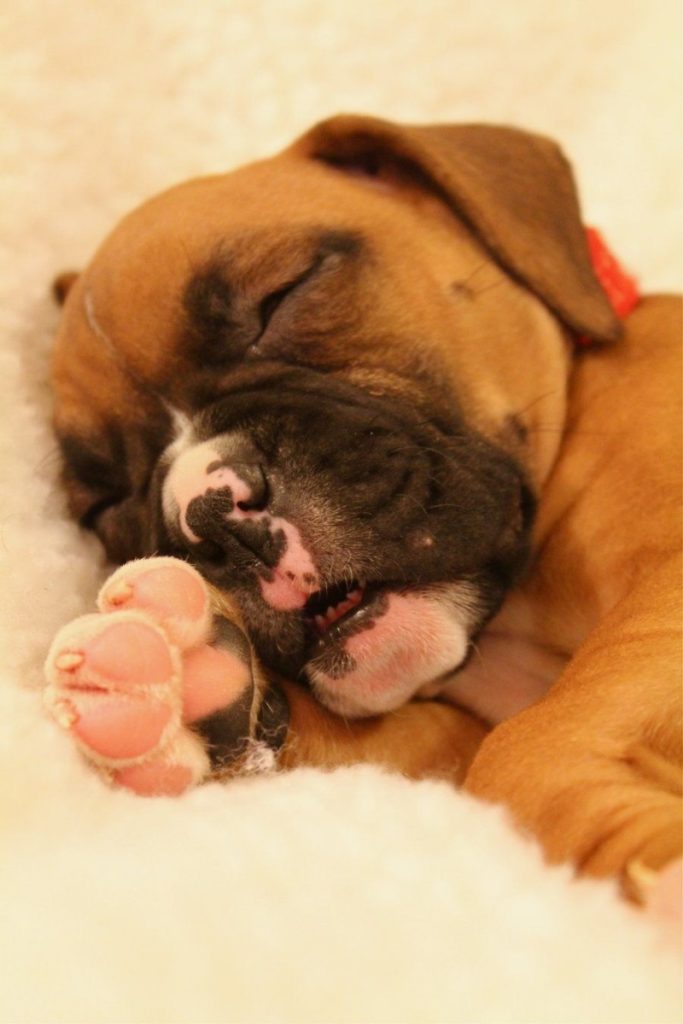As puppy parents, we know that keeping our little furballs entertained is no small feat. It’s essential to provide them with toys that not only stimulate their minds but also keep their bodies active. The world of puppy toys is vast and varied, offering a plethora of options to cater to every pup’s unique personality and energy levels. In this article, we delve into the world of puppy play, offering insights and tips to ensure your furry friend has the best playtime experience possible.
Keeping Your Pup Entertained: The Ultimate Guide to Puppy Toys
Ah, the joy of watching a puppy’s eyes light up with excitement as they discover a new toy. It’s an experience that warms the heart and fills the home with endless energy. But with so many options out there, how do you choose the perfect puppy toys to keep them busy and entertained? Fear not, fellow pet parent, for this guide is here to help you navigate the world of puppy playthings.
Puppies are curious creatures, always on the move and eager to explore. Their playful nature is not just adorable; it’s also essential for their development. A well-chosen toy can stimulate their mind, help with physical exercise, and even provide a sense of security. So, let’s dive into the world of puppy toys and find the perfect additions to your furry friend’s playtime.
Interactive Toys: The Heart of Engagement
Interactive toys are a game-changer for puppy play. These toys often come with moving parts, sounds, or treats that encourage your pup to interact with them. Think puzzle feeders, treat-dispensing balls, or even electronic toys that respond to your puppy’s movements. These types of toys not only keep your puppy entertained but also help to sharpen their problem-solving skills and provide mental stimulation.
Durability and Fun: A Winning Combination
When it comes to puppy toys, durability is key. Puppies are notorious for their sharp teeth and aggressive play, so you’ll want to invest in toys that can withstand the test of time and teeth. Look for toys made from sturdy materials like heavy-duty rubber, canvas, or reinforced fabrics. At the same time, don’t forget that fun is just as important. Bright colors, playful shapes, and textures that feel good in their paws can make all the difference in how much your puppy enjoys their toy.
Top Picks for Puppy Toys to Keep Them Busy
Now, let’s talk about some specific types of toys that are sure to keep your puppy’s tail wagging:
-
Squeaky Toys: The classic squeaker is a must-have. It’s simple, effective, and can be a soothing presence for your puppy, especially during teething or when they’re feeling anxious.
-
Tug Toys: These are great for building strength and teaching your puppy about appropriate play. Look for tug toys that are strong enough to withstand a good pull.
-
Rope Toys: Ideal for teething puppies, rope toys are gentle on their gums and can be used to play a variety of games, from tug-of-war to fetch.
-
Kong Toys: These versatile toys are fantastic for stuffing with treats or peanut butter. They can keep your puppy busy for hours as they work to get to the tasty surprise inside.
The Importance of Safety First
While fun is paramount, safety should always come first. Ensure that the toys you choose are free of small parts that could pose a choking hazard. Check for any loose threads or sharp edges that could hurt your puppy. Also, keep an eye on your pup while they’re playing to make sure they don’t ingest any toy pieces.
How to Choose the Right Toy for Your Puppy’s Breed and Size
Different breeds and sizes of puppies have different play needs. For example, a large breed puppy will need a toy that can withstand their strength, while a small breed puppy might prefer something that’s more gentle on their smaller teeth. Consider your puppy’s energy level, play style, and size when selecting toys. A well-matched toy will provide the perfect balance of challenge and enjoyment.
Innovative Designs for Endless Playtime
The pet toy industry is always evolving, and there are some truly innovative designs out there. From toys that double as chew sticks to those that teach your puppy new tricks, there’s something for every pup. These unique toys can help keep your furry friend engaged and can even be used as training aids.
Sustainability and Eco-Friendly Options
In today’s world, many pet parents are looking for eco-friendly options for their pets. There are plenty of durable, sustainable toys made from natural materials like cotton, bamboo, and recycled plastics. These toys not only help the environment but can also be just as fun and durable as their non-sustainable counterparts.
In conclusion, the world of puppy toys is vast and varied, offering a plethora of options to keep your furry friend busy and happy. By considering the type of play your puppy enjoys, their size and breed, and the importance of safety, you can find the perfect toys to add to their collection. Remember, a tired puppy is a happy puppy, so go ahead and make playtime a priority for your little one.
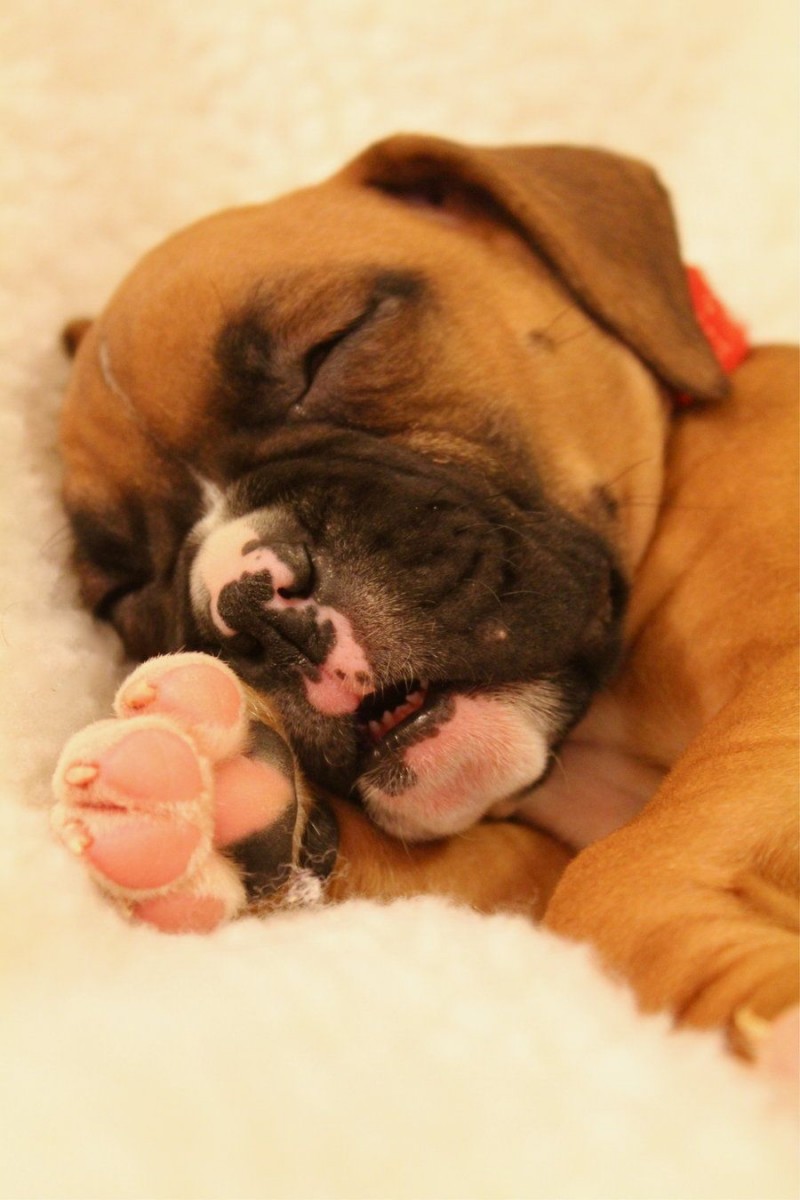
Why Busy Puppies Are Happy Puppies
Puppies, with their boundless energy and curiosity, are a joy to have around. However, their high levels of activity can sometimes lead to restless behavior if not properly managed. That’s where keeping your furry friend busy comes into play. Busy puppies are not only happier but also healthier. Here’s why.
Endless Energy NeedsPuppies are like little sponges, soaking up every bit of energy and excitement they can get their paws on. From the moment they’re born, they’re in constant motion, exploring their world with an enthusiasm that’s contagious. This constant movement is not just for fun; it’s essential for their physical and mental development. Without adequate stimulation, a puppy can become overwhelmed by their own energy, leading to destructive behaviors.
Mental Stimulation is KeyIt’s not just the physical activity that matters; mental stimulation is equally crucial. Puppies have curious minds that need to be engaged. Toys that challenge their problem-solving skills can prevent boredom and reduce the likelihood of destructive chewing or excessive barking. By providing puzzles and interactive toys, you’re not only keeping them entertained but also sharpening their cognitive abilities.
Behavioral BenefitsA busy puppy is less likely to engage in unwanted behaviors. When puppies are bored, they may turn to destructive activities like digging, chewing on furniture, or even nipping at people. By keeping them occupied with toys that require focus and effort, you can redirect their energy into positive, constructive playtime. This not only saves your belongings but also strengthens the bond between you and your pup.
Socialization Through PlayPlay is a vital part of a puppy’s socialization process. Engaging in play with toys can help them learn how to interact with other dogs and humans. It teaches them about boundaries, sharing, and even the concept of taking turns. This social play is not just fun; it’s an essential step in helping your puppy grow into a well-behaved adult dog.
Physical HealthRegular physical activity is crucial for a puppy’s physical development. It helps to build strong muscles and bones, maintain a healthy weight, and improve cardiovascular health. By keeping your puppy busy with toys that encourage movement, you’re helping to set them up for a lifetime of good health.
Emotional Well-beingPuppies that are kept busy tend to be more emotionally stable. They are less prone to stress and anxiety, which can manifest as nervousness or aggression. When they have toys that they can play with independently, it can also provide them with a sense of security and comfort, especially when they are left alone.
Long-term BenefitsThe habits you instill in your puppy during these formative years can have long-term benefits. A puppy that grows up with a routine of regular play and exercise is more likely to be a well-behaved adult. They will also have a better understanding of how to channel their energy into appropriate activities, reducing the likelihood of obesity and related health issues.
Choosing the Right ToysWhen selecting toys for your busy puppy, it’s important to consider their age, size, and interests. Soft plush toys are great for cuddling, while durable chew toys can satisfy their need to gnaw. Puzzle toys that hide treats can keep them entertained for hours, and tug-of-war toys can provide a fun way to bond.
ConclusionIn summary, busy puppies are happy puppies. By providing your furry friend with a variety of engaging toys, you’re not just entertaining them; you’re investing in their overall well-being. From physical health to mental stimulation and emotional stability, the benefits of keeping your puppy busy are clear. So, go ahead and play fetch, hide and seek, or offer a new puzzle toy – your pup will thank you with endless joy and wagging tails.
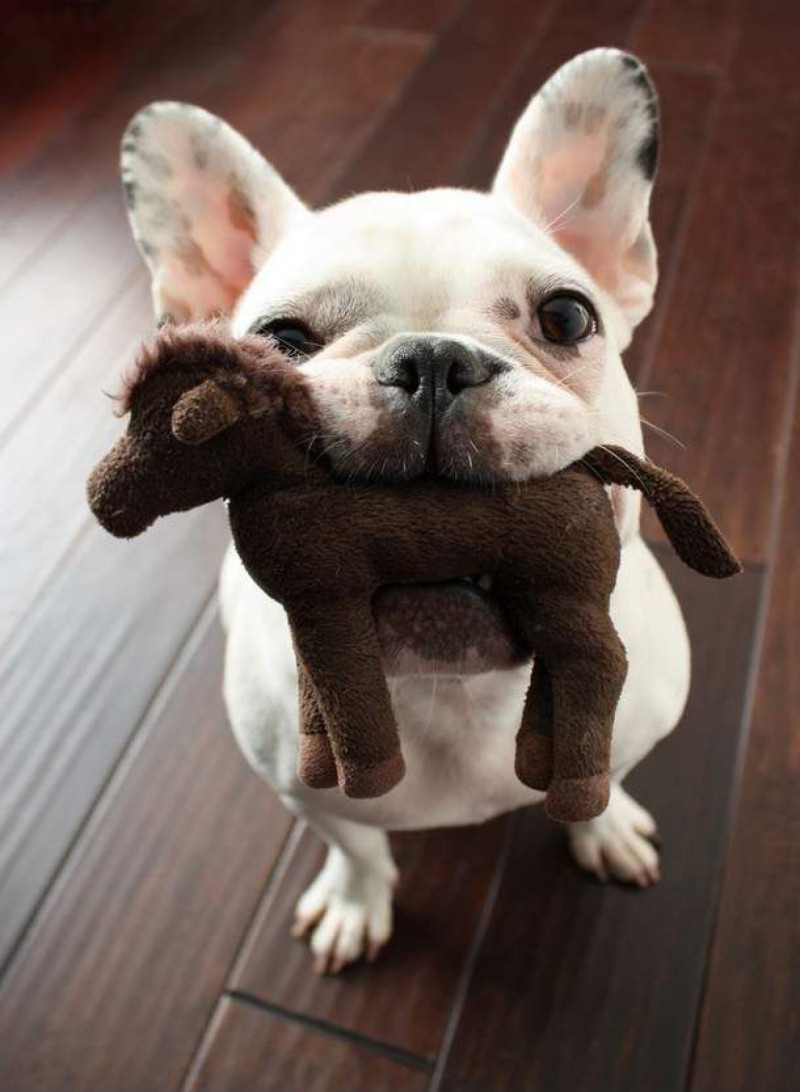
Interactive Toys: The Key to Engaging Your Furry Friend
Interactive toys aren’t just a source of fun for your furry friend; they’re the cornerstone of an engaging and stimulating playtime. These toys are designed to captivate your puppy’s attention, encouraging them to use their natural instincts and problem-solving skills. Here’s why interactive toys are the key to keeping your pup both entertained and engaged.
One of the main benefits of interactive toys is that they mimic the natural behaviors of puppies. Puppies are born with a strong instinct to chew, chase, and explore. By providing them with toys that encourage these activities, you’re not just keeping them busy, you’re also giving them a healthy outlet for their energy and curiosity. This kind of play is crucial for their development, helping to shape their behavior and keep them from becoming destructive or bored.
Interactive toys often come with moving parts, sounds, or puzzles that stimulate your puppy’s senses. This sensory engagement can be incredibly satisfying for a puppy. For instance, a toy with a hidden treat can keep your pup’s nose to the ground, as they sniff out the reward. This type of play is not only mentally stimulating but also physically exhausting, which is perfect for a high-energy puppy.
Engaging in interactive play with your puppy can also be a bonding experience. When you play with your dog, you’re not just entertaining them; you’re also strengthening the relationship between you. This shared playtime can help build trust and loyalty, making your pup feel more secure and valued. Plus, it’s a great way to show them that you’re there to support them through their adventures.
Interactive toys can also help prevent common behavioral issues in puppies. Boredom, loneliness, and separation anxiety can lead to unwanted behaviors like excessive barking, digging, or even destructive chewing. By keeping your puppy’s mind occupied with interactive play, you can reduce the likelihood of these issues arising. Puppies who are mentally stimulated are less likely to seek out negative behaviors as a form of entertainment.
The cognitive benefits of interactive toys are significant. Puppies are like sponges when it comes to learning, and interactive toys provide them with a fun and effective way to practice their problem-solving skills. Toys that require your puppy to figure out how to get to a treat or to manipulate a toy in a certain way can help sharpen their mind. This cognitive exercise is beneficial for their overall mental health and can even contribute to a longer and healthier life.
When choosing interactive toys for your puppy, consider their age, size, and interests. Puppies have varying levels of energy and dexterity, so the right toy will depend on your pup’s unique personality. Younger puppies might enjoy toys with bright colors and soft textures, while older puppies might prefer toys that are more durable and challenging. There’s a wide range of options available, from puzzle toys to treat-dispensing balls, and even toys that can be attached to a leash for a game of tug-of-war.
Another advantage of interactive toys is that they can be used indoors or outdoors. Whether you’re at home or taking a walk in the park, these toys can be a part of your puppy’s daily routine. This versatility means your puppy can enjoy interactive play no matter where they are, making it a convenient choice for busy pet owners.
It’s important to remember that while interactive toys are fantastic for engaging your furry friend, they should be used in moderation. Too much playtime with certain toys can lead to overstimulation, so it’s best to rotate your puppy’s toys regularly. This way, they don’t get bored of the same toy too quickly, and you can keep the playtime fresh and exciting.
In conclusion, interactive toys are more than just a way to pass the time; they are an essential tool for keeping your puppy happy, healthy, and mentally sharp. By providing your puppy with these engaging toys, you’re giving them the opportunity to exercise their natural behaviors, strengthen their bond with you, and develop their cognitive abilities. So, the next time you’re looking for a way to keep your pup occupied, remember that an interactive toy could be the key to their contentment.
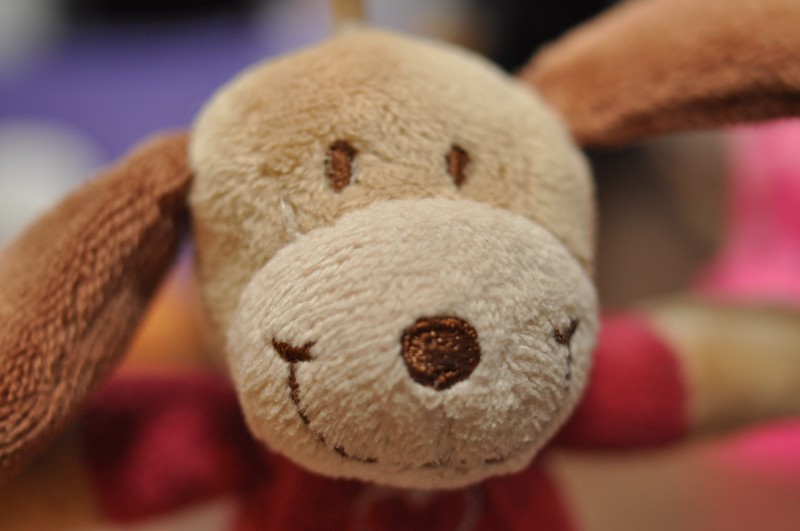
Durable and Fun: The Perfect Blend for Puppy Play
In the world of puppy play, the ideal toy must strike a balance between durability and fun. This ensures that your furry friend not only enjoys hours of playtime but also gets the physical and mental stimulation they need to thrive. Let’s delve into why this perfect blend is so crucial for your pup’s happiness and development.
Puppies are like sponges, absorbing everything around them through their senses. A durable toy can withstand the vigorous play that comes with a growing pup’s energy. Whether they’re chewing, tugging, or batting, a sturdy toy can take the punishment without losing its charm. This not only prolongs the life of the toy but also keeps your puppy engaged for longer periods.
Fun, on the other hand, is the spark that ignites your puppy’s enthusiasm. A toy that is fun to play with encourages your pup to interact more, which is essential for their social and emotional development. Think of a plush toy with a squeaker inside—it’s not just a chew toy; it’s a source of endless amusement and a way for your puppy to express their playful nature.
The texture of a toy also plays a significant role in its appeal. A variety of textures can stimulate your puppy’s mouth and tongue, providing a tactile experience that’s both satisfying and stimulating. For instance, a toy with a rough texture can help clean your puppy’s teeth, while a soft and plush exterior can be comforting during downtime.
One of the best features of a durable and fun toy is its ability to encourage problem-solving skills. Toys that require your puppy to figure out how to get to the treat inside, like a puzzle ball or a treat-dispensing toy, can keep your pup’s mind sharp. This kind of play is not only entertaining but also beneficial for their cognitive development.
When selecting a toy, consider the size of your puppy. A toy that’s too small can be easily swallowed or cause choking, while a toy that’s too large might not be as fun for your pup to play with. The right size ensures that the toy is manageable and enjoyable without posing a risk to your puppy’s safety.
Durability also means the toy can withstand different types of play. Some puppies love to chase and fetch, while others might prefer to tug and bite. A toy that can handle a variety of play styles is versatile and can keep up with your puppy’s changing preferences over time.
For those who want to encourage outdoor play, durable toys that are water-resistant or even waterproof are ideal. These can be great for a trip to the park or a swim in the lake, providing a refreshing change of pace and keeping your puppy’s playtime interesting.
In addition to traditional toys, there are now a plethora of interactive toys that can be paired with treats or kibble. These toys can be filled with food, and as your puppy plays with them, the food is slowly released. This type of toy not only keeps your puppy busy but also helps in managing their weight by providing a healthy way to snack.
For puppies with a penchant for destructive behavior, durable toys can be a lifesaver. By providing them with appropriate items to chew on, you can redirect their energy away from your furniture, shoes, or other household items. This not only protects your belongings but also ensures that your puppy doesn’t develop bad habits.
Lastly, consider the materials used in the toy. Natural materials like rubber and rope are not only durable but also biodegradable, making them a more eco-friendly choice. Plus, they often come with a unique texture that can be irresistible to a teething puppy.
In conclusion, a durable and fun toy is the heart of a happy and healthy puppy playtime. It provides entertainment, stimulates the senses, and aids in the development of various skills. By choosing the right toy, you’re not just giving your puppy a plaything; you’re investing in their overall well-being.
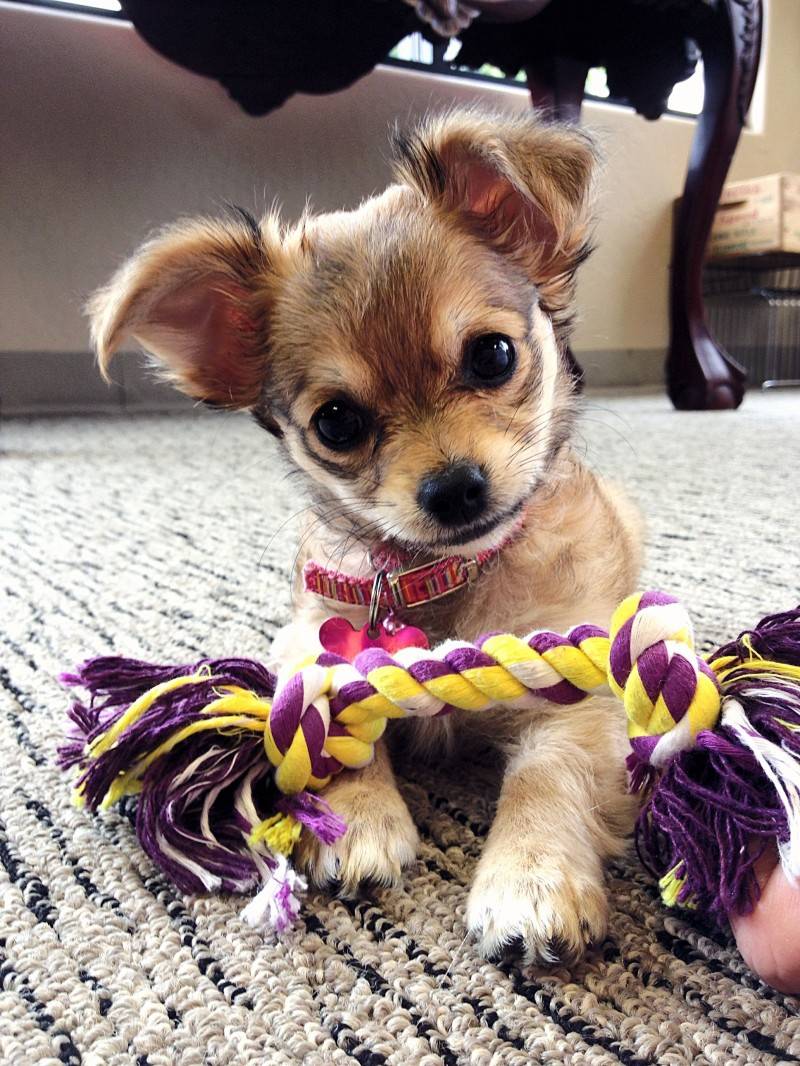
Top Picks for Puppy Toys to Keep Them Busy
Navigating the world of puppy toys can be overwhelming, especially when you want to ensure your furry friend stays entertained and engaged. Here are some top picks that are sure to keep your puppy busy for hours:
Squeaky Chew Toys: The Classic ChoiceOne of the most enduring favorites, squeaky chew toys are a staple in any puppy’s playtime. These toys not only provide entertainment but also help keep your puppy’s teeth clean and healthy. Look for ones made from durable materials that can withstand hearty chewing, like rubber or sturdy plastic. The sound of the squeaker can be particularly intriguing for a curious puppy, encouraging them to play and explore.
Interactive Treat Dispensers: Brain Teasers for Busy PupsFor puppies that need a mental challenge as well as physical exercise, interactive treat dispensers are a game-changer. These toys are designed to hide treats or kibble inside, and your puppy must work to get them out. This not only keeps them busy but also stimulates their brain. There are various levels of difficulty, so you can start with simple designs and gradually increase the challenge as your puppy becomes more skilled.
Fishing Rods and Teaser Poles: The Catch of the DayFishing rod and teaser pole toys mimic the natural hunting behavior of puppies. These toys allow you to “catch” pieces of fabric or toys that your puppy can chase after. The motion and sound of the teaser can be incredibly captivating for young dogs, providing them with a satisfying workout. Plus, they offer a great bonding experience as you engage with your puppy during playtime.
Tug-of-War Toys: The Strength TestFor puppies that have a lot of energy and need to work out their jaw strength, tug-of-war toys are perfect. They come in various forms, from ropes to plush animals with strong stitching. Tug-of-war is not only a fun physical activity but also helps puppies learn bite inhibition, an essential skill for preventing damage during play. Always supervise play with these toys to ensure safety.
Plush Toys with Hidden Features: The Surprise ElementPlush toys can be a soft, comforting option for your puppy, but adding hidden features can elevate their playtime. Some plush toys come with crinkly textures, jingly bells, or even squeakers that can stimulate your puppy’s senses. Look for ones that are well-made and have sturdy seams to withstand puppy teeth. These toys provide a sense of security while also keeping your pup entertained.
Agility Courses and Obstacle Sets: The Pup’s GymFor a more dynamic play experience, agility courses and obstacle sets can be a fantastic addition to your puppy’s toy collection. These sets often include tunnels, ladders, and weaving poles that encourage your puppy to navigate a course. This type of play is excellent for building coordination, balance, and overall physical fitness. It also gives your puppy the opportunity to burn off excess energy.
Puzzle Feeder Mats: The Food for ThoughtPuzzle feeders are a fantastic way to make mealtime more engaging. These mats have various compartments or obstacles that your puppy must navigate to get to their food. This not only prolongs mealtime but also challenges your puppy’s problem-solving skills. It’s a great way to keep your pup’s mind sharp and their appetite satisfied.
Doggy Gyms and Climbing Structures: The Vertical AdventureDoggy gyms and climbing structures offer a vertical play space that can be particularly appealing to puppies. These multi-level setups often include platforms, ropes, and hideaways, providing a sense of adventure and exploration. They encourage puppies to use their entire body, which is great for strength and coordination. Plus, they can be a safe place for your puppy to retreat when they need a moment to rest.
When selecting toys for your busy puppy, it’s essential to consider their size, energy level, and chewing habits. Opt for toys that are appropriately sized to prevent swallowing or choking hazards. Always supervise play, especially with new or particularly sturdy toys, to ensure they are used safely. With the right selection of toys, you can create a fun and enriching environment that keeps your puppy busy, happy, and healthy.
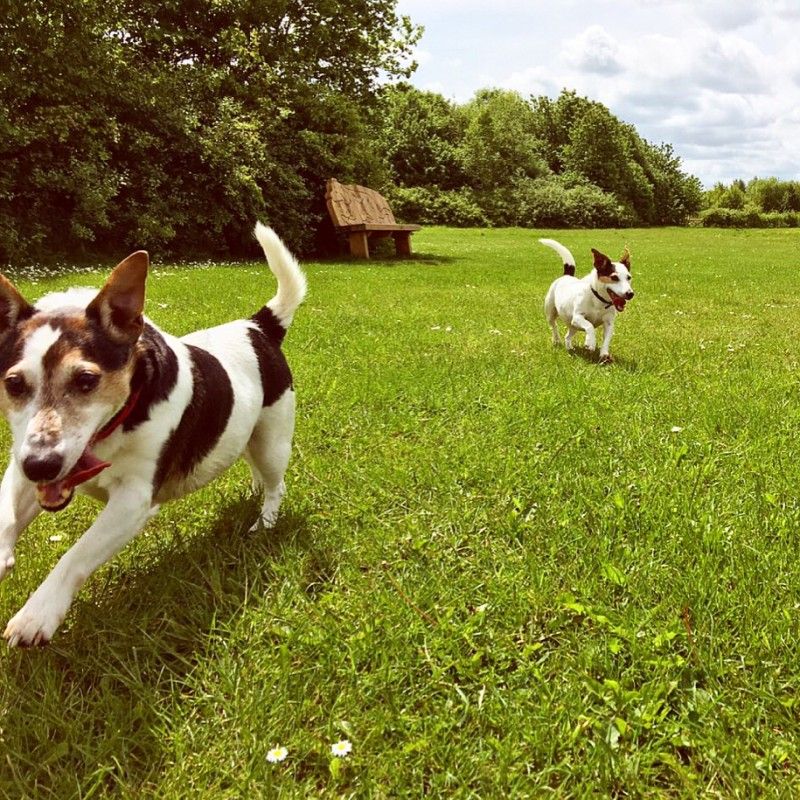
The Importance of Safety First
In the world of puppy play, ensuring safety should always be the cornerstone of every decision. From the materials used to the design of the toy, every element should be considered with your puppy’s well-being in mind. Here are some key reasons why safety is paramount when it comes to puppy toys.
The Small Size Can Be a Big RiskPuppies are naturally curious, and their tiny paws can easily find their way into places where they shouldn’t be. Small toys, especially those with removable parts, can pose a serious choking hazard. It’s crucial to supervise playtime to prevent any swallowing of small pieces that could lead to a trip to the vet.
Hard Materials Are Your Best FriendPuppies have sharp little teeth and can easily chew through soft materials. Investing in toys made from durable materials like nylon, stainless steel, or rubber ensures that they will withstand the test of time and rigorous play. This not only protects your investment but also your puppy from potentially harmful ingestions.
Avoid Strings and YarnStringy toys may seem fun, but they can easily tangle around a puppy’s neck or cause internal harm if ingested. Yarn and similar stringy materials can create dangerous blockages in a puppy’s digestive system, leading to surgery. It’s best to steer clear of these types of toys to prevent unnecessary worry and potential medical emergencies.
Watch for Sharp EdgesWhile durability is important, it’s equally crucial to ensure that toys do not have sharp edges or corners. Puppies may chew with all their might, and if a toy has any sharp points, they could end up with cuts or lacerations on their mouths or tongues. A well-designed toy should be smooth to the touch and free of any jagged edges.
Beware of Harmful SubstancesSome toys are painted with colorful finishes that may contain harmful chemicals. Look for toys that are labeled non-toxic, and always check for any signs of chipping or peeling paint that could lead to ingestion of these chemicals. It’s better to be cautious and choose toys that have been tested for safety and durability.
Teach Responsible ChewingIt’s not just about the toys themselves; it’s also about how your puppy uses them. Teach your puppy appropriate chewing behavior from an early age. Offer a variety of chew toys, but also provide redirection when you catch them gnawing on items they shouldn’t be. This can help prevent the accidental destruction of furniture or ingestion of non-toy items.
Regular Inspections Are NecessaryJust like any other aspect of puppy care, regular checks of your puppy’s toys are essential. Look for any signs of wear and tear, such as loose threads, worn spots, or broken pieces. If a toy is getting close to falling apart, it’s time to replace it to prevent any potential accidents during playtime.
Create a Play AreaDesignate a play area for your puppy where you can monitor their playtime and the types of toys they have access to. This can help prevent them from finding and playing with unsafe items around the house. It also gives you the opportunity to engage in supervised play sessions, which are vital for the mental and physical development of your furry friend.
Educate Your FamilyLastly, educate anyone who interacts with your puppy about the importance of safety when it comes to toys. Children, for example, may not understand the potential dangers of certain toys and could inadvertently place them in the puppy’s reach. A team effort can significantly reduce the risk of accidents.
Remember, a safe toy is a toy that your puppy can play with without any risk of harm. By choosing the right toys and being vigilant during playtime, you’re not only ensuring a happy and healthy play experience for your puppy but also fostering a sense of trust and security. After all, when your puppy is safe, you can relax and enjoy the many delightful moments that come with having a playful pup.
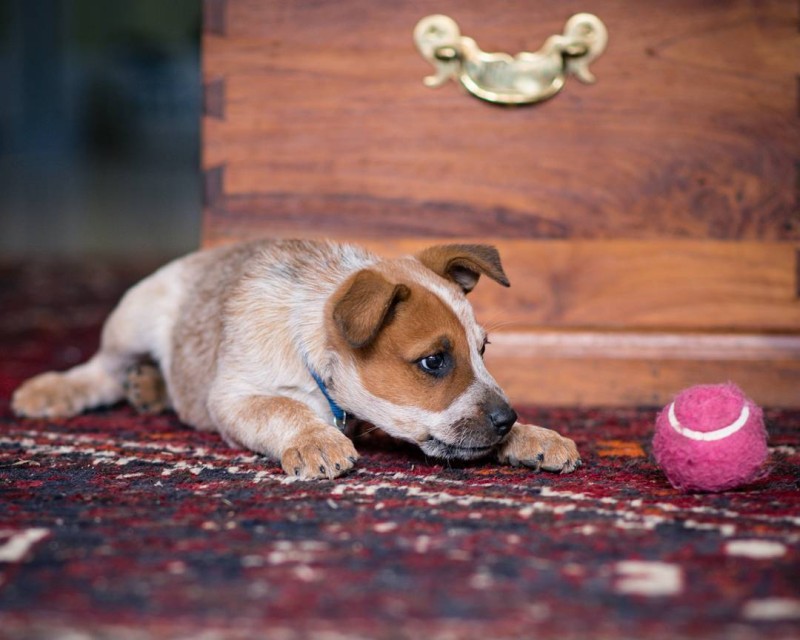
How to Choose the Right Toy for Your Puppy’s Breed and Size
Finding the perfect toy for your puppy is not just about size or durability; it’s about understanding your pup’s breed and how they play. Different breeds have unique temperaments and physical characteristics that influence what type of toy will keep them engaged and safe. Here are some tips to guide you in selecting the right toy for your furry friend based on their breed and size:
Breed-Specific Toys for Power Paws
Large breeds like Labs and German Shepherds are known for their strength and energy. These dogs require toys that can withstand heavy chewing and pulling. Think sturdy rubber balls, KONG toys filled with treats, or interactive tug-of-war ropes. These toys not only provide entertainment but also help in exercising their powerful jaws and legs.
Small Breed Toys for Tiny Terrors
On the flip side, small breeds like Chihuahuas and Pomeranians have delicate frames and can be prone to overexertion. Look for lightweight, soft toys that won’t overwhelm them. Small plush toys, squeaky rubber balls, or puzzle toys designed for smaller paws are excellent choices. These toys can help maintain their agility without straining their bodies.
Toys for the Hunter in Your Puppy
Breeds like Beagles, Jack Russell Terriers, and Huskies are natural hunters. They thrive on toys that mimic their instinctual prey. Durable, soft plush toys that resemble birds or mice can be great for play. You can even use these as training aids to teach commands related to hunting.
Water Toys for the Aquatic Pups
If your puppy loves the water, consider toys that are specifically designed for aquatic play. Durable rubber or floating toys that can withstand splashes and splashes are perfect. These can help keep your pup entertained in the pool or during a beach day, and they can even aid in water safety training.
Squeaky Toys for the Noisy Ones
Some breeds are just naturally noisy. Puppies with high energy and a propensity for barking might enjoy toys that come with a rattle or squeaker. These can provide a satisfying noise that helps soothe them or distract them from unwanted behaviors. Just be mindful of the noise level, as it should not be too loud to cause discomfort or hearing damage.
Taste-Driven Toys for the Foodies
Certain breeds, like Labradors and Golden Retrievers, are drawn to food. Look for toys that encourage them to work for treats, such as treat-dispensing balls or puzzle toys that hide snacks inside. These toys can keep your pup’s mind occupied while satisfying their hunger, and they’re great for mental stimulation.
Teeth-Grinding Toys for the Chewaholics
Puppies of all sizes go through a teething phase. Some breeds, like Pit Bulls and Rottweilers, are particularly notorious for their chewing habits. Providing them with durable chew toys can prevent them from destroying your furniture. Look for toys made from natural materials like rubber or rope, which are designed to be chewed and can help clean their teeth.
Toys for the Social Butterflies
Some dogs are social creatures and love to play with other dogs. For these pups, consider toys that are made for group play, like large plush toys with a sturdy rope for pulling. These can be great for outdoor playdates or even indoor games with the family.
Toys for the Quiet Observers
Dogs like the Dachshund or Shih Tzu might not be as energetic or loud as other breeds, but they still need toys that suit their temperament. Look for toys that offer a quieter form of entertainment, like puzzle toys that can keep them engaged without a lot of noise or movement.
Remember, the best toy for your puppy is one that matches their personality, energy level, and size. By considering these factors, you can ensure that your puppy stays happy, healthy, and entertained. Always supervise playtime, especially with new toys, to make sure they are safe and appropriate for your furry friend.
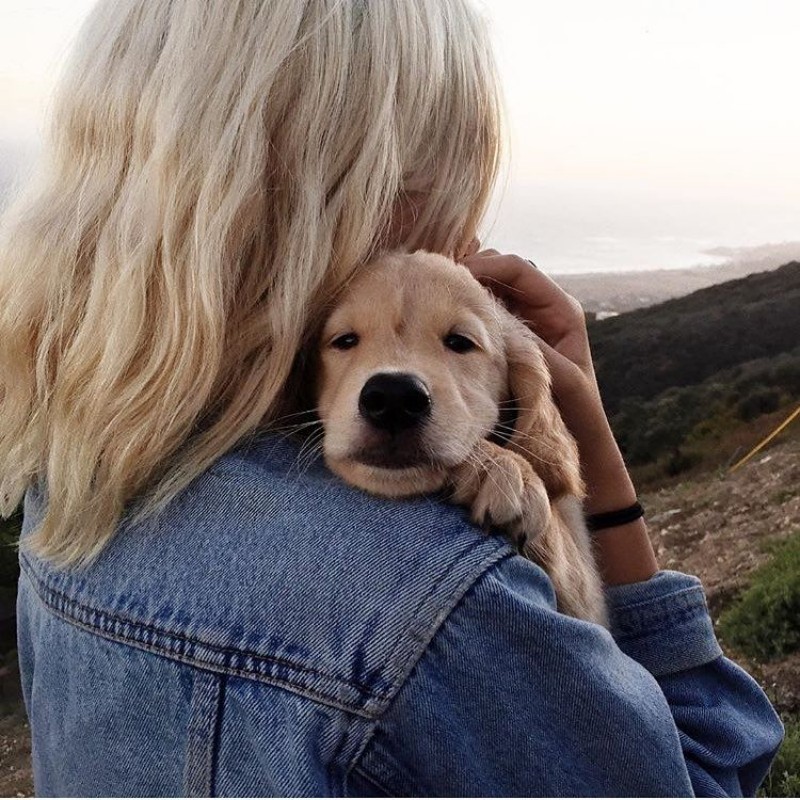
Innovative Designs for Endless Playtime
In the world of puppy toys, innovation is key to keeping your furry friend engaged and entertained. Here are some creative and innovative designs that promise endless playtime for your little companion:
-
Sensory Stimulation Plushies: These toys are not just for cuddling; they’re packed with textures, crinkles, and sounds that stimulate your puppy’s senses. From soft, plush animals to ones with squeakers and beads that rattle, these toys are perfect for puppies that need a little sensory overload to stay busy.
-
Intelligent Interactive Puzzles: Many puppies thrive on mental stimulation. Interactive puzzles come in various forms, such as treat-dispensing toys that challenge your pup to figure out how to get to the hidden treats. These toys not only keep your puppy’s mind active but also ensure they stay physically engaged as they paw, push, and pull to uncover the treats.
-
Tug-of-War and Teething Toys: Puppies love to chew, and they also enjoy the thrill of a good game of tug-of-war. Teething toys designed with tough, durable materials are not only great for soothing sore gums but also for providing hours of fun. Look for toys with multiple textures to keep the teething experience interesting.
-
Fishing Rods and Retrieval Toys: These are fantastic for puppies that love to chase and fetch. A good fishing rod toy can keep your pup busy for ages as they leap, dive, and try to catch the floating “fish.” These toys can be used both indoors and outdoors, making them versatile additions to your puppy’s playtime arsenal.
-
Motion-Activated Toys: Puppies are often drawn to movement, and motion-activated toys take advantage of this. From rolling balls that chase after your puppy to interactive robots that move and make sounds, these toys keep your pup on their toes as they try to anticipate and react to the toy’s movements.
-
Hide-and-Seek Toys: Toys that encourage hide-and-seek play are excellent for social interaction and physical activity. Hide toys or puzzle boxes that allow you to place treats or small bones inside are perfect for indoor play, especially when the weather isn’t conducive to outdoor activities.
-
Flavored and Smelly Toys: Puppies are naturally attracted to scents, and toys that come in various flavors or scents can make playtime even more enjoyable. Cheese-flavored squeaky toys or toys infused with natural essential oils can entice your puppy to engage with them, especially if they have a strong sense of smell.
-
Multi-Function Toys: Some toys are designed with multiple purposes in mind. For example, a toy that can be both a teether and a tug-of-war toy is not only versatile but also time-saving. These types of toys often have different textures on different parts, catering to different aspects of your puppy’s play.
-
Outdoor Adventure Toys: When it’s time for outdoor play, consider toys that are specifically designed for the great outdoors. Water toys, such as floatable balls or rings, are great for splashing around, while durable rope toys are perfect for playing fetch in the park.
-
Customizable Toys: For a personal touch, consider customizable toys that you can decorate or personalize with your puppy’s name or favorite colors. This not only adds to the fun but can also help you identify your puppy’s toys easily.
By incorporating these innovative designs into your puppy’s playtime, you can ensure that they have endless entertainment options that are both fun and engaging. Remember, the best toys are those that encourage your puppy to use their body, mind, and senses, helping them stay active and happy.

Sustainability and Eco-Friendly Options
In today’s world, where the environment is at the forefront of many discussions, it’s no surprise that pet owners are increasingly looking for sustainable and eco-friendly options for their furry friends. When it comes to puppy toys, this trend is no different. Choosing toys that are not only fun but also kind to the planet can make a significant impact. Here are some key points to consider when seeking sustainability in puppy playtime.
Natural Materials Make a Difference
Natural materials like wood, bamboo, and cotton are not only gentle on your puppy’s teeth and gums but also on the environment. These materials are biodegradable, which means they break down naturally over time, reducing waste and pollution. Plus, they often come from renewable resources, making them a greener choice for pet toys.
Recycled Plastics: A Greener Choice
Plastic is a popular material for toys due to its durability, but not all plastics are created equal. Recycled plastics, on the other hand, are a more sustainable option. By using recycled materials, manufacturers help reduce the demand for new plastics, which in turn lessens the environmental impact of plastic production. Look for toys made from recycled HDPE (high-density polyethylene), which is often marked as such.
The Power of Biodegradable Plastics
While traditional plastics take hundreds of years to decompose, biodegradable plastics break down much faster. They are made from materials that can be broken down by microorganisms in the soil, reducing the risk of pollution in landfills. Toys made with biodegradable plastics are a step towards a cleaner planet, though it’s important to ensure they are disposed of properly to allow for the natural decomposition process.
Eco-Friendly Dyes and Coatings
The dyes and coatings used on toys can also have a significant impact on the environment. Opt for toys that use eco-friendly dyes and coatings, which are free from harmful chemicals. These dyes are typically derived from natural sources and are less likely to leach into the soil or waterways if the toy is eventually disposed of.
The Role of Fair Trade
Supporting fair trade initiatives can also contribute to sustainability. Toys that are produced through fair trade practices ensure that workers are paid a fair wage and work in safe conditions. This not only supports the local communities but also encourages ethical manufacturing practices.
The Importance of Responsible Production
Manufacturers who prioritize sustainability in their production processes are more likely to create toys that are environmentally friendly. Look for companies that use renewable energy, have a commitment to reducing waste, and strive to minimize their carbon footprint.
Eco-Friendly Packaging
The packaging that toys come in is also an important consideration. Opt for brands that use recycled materials for their packaging or even better, brands that use compostable or biodegradable materials. This reduces the amount of waste that ends up in landfills and supports the circular economy.
Longevity Over Disposable
Investing in high-quality, durable toys that can withstand the test of time is not only better for your puppy but also for the environment. Disposables contribute to waste, while well-made toys can last for years, reducing the need for constant replacements.
Educational Toys for a Greener Mindset
Some eco-friendly toys are designed not just to entertain but also to educate. Toys that encourage your puppy to engage in activities that promote problem-solving and exploration can help foster a greener mindset, teaching your puppy the importance of taking care of the environment from a young age.
Supporting Sustainable Brands
When shopping for puppy toys, look for brands that are transparent about their sustainability practices. Supporting these brands can help drive the demand for more eco-friendly products and encourage other manufacturers to follow suit.
In conclusion, when it comes to puppy toys, there are many ways to choose options that are both fun and sustainable. By considering the materials, production processes, and overall impact on the environment, you can make a difference in the world while providing your furry friend with the toys they need to stay entertained and healthy. Remember, every small choice counts, and together, we can create a better, greener future for our pets and the planet.
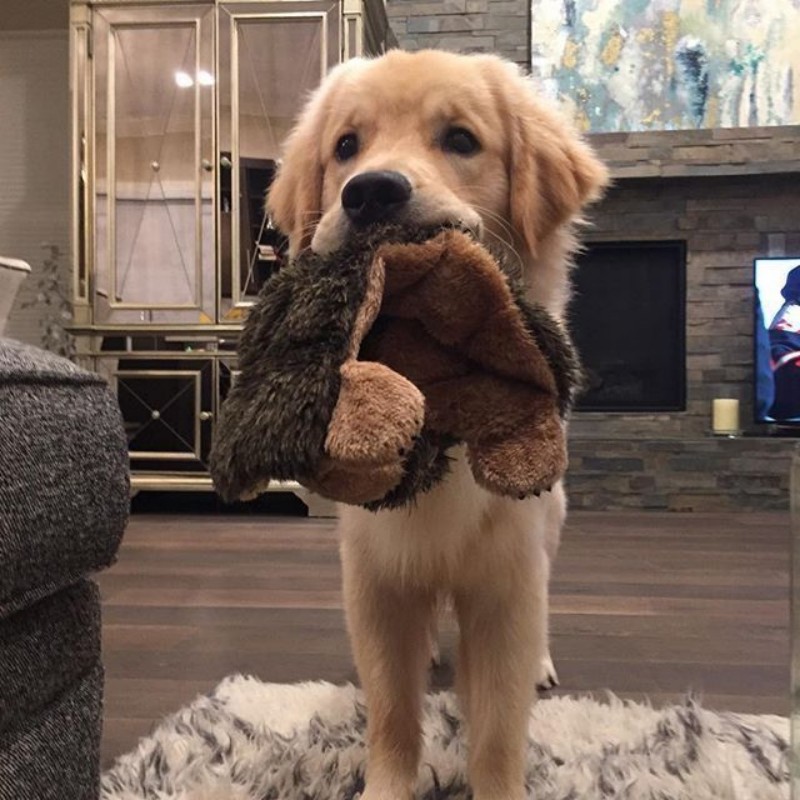
Conclusion: Giving Your Puppy the Best of Playtime
Choosing the right toy for your puppy can be a delightful endeavor, one that ensures they stay engaged and entertained throughout their playful days. However, it’s not just about picking any old toy; it’s about selecting one that aligns with your puppy’s breed and size, ensuring both safety and enjoyment. Here’s how to make that perfect match:
Consider your puppy’s breed characteristics. Different breeds have unique instincts and play styles. For instance, terriers might enjoy chasing and digging, while retrievers are likely to relish games of fetch. Understanding these traits can guide you towards toys that cater to your puppy’s natural inclinations.
Size matters. The size of the toy is crucial for safety and effectiveness. A toy that’s too large for a small puppy could become a choking hazard, while one that’s too small for a larger breed might not hold their interest. For small breeds, opt for toys that are small enough for them to grip and manipulate, but not so small that they can swallow them. Larger breeds will benefit from toys that are sturdy and can withstand rough play.
Your puppy’s energy level should also be a factor. High-energy breeds, like Labradors or Border Collies, might require toys that challenge them physically and mentally, such as puzzle toys that keep them busy for longer periods. On the other hand, more laid-back breeds may be content with simpler toys that are easier to handle.
Texture and sound can also be appealing to puppies. Many enjoy plush toys that they can chew on, while others might be drawn to toys that make noise or have a unique texture. Some breeds might even show a preference for certain materials, like rubber or fabric, so pay attention to what your puppy seems to gravitate towards.
Remember that dogs have their preferences too. What works for one puppy might not work for another. Keep an eye on your furry friend and observe which toys they show the most interest in. This can help you refine your choices and find the perfect toy that resonates with your puppy’s personality.
Puppies, like children, go through developmental stages, and their play preferences can change as they grow. For younger puppies, soft, easy-to-chew toys can help them explore their world safely. As they mature, they may need toys that challenge their intelligence and physical abilities, such as tug toys or toys with moving parts.
When introducing new toys, be patient. Some puppies may need a little time to adjust to new objects, especially if they’re shy or anxious. Encourage your puppy to interact with the toy, and if they show hesitation, gently guide them with positive reinforcement.
In the end, the best toys for your puppy are those that encourage physical activity, mental stimulation, and emotional well-being. They should be safe, durable, and tailored to your puppy’s specific needs. By taking the time to understand your puppy’s breed, size, energy level, and preferences, you’ll be well on your way to giving them the best playtime experiences. Always keep an eye out for signs of wear and tear, and replace toys when they become damaged to maintain your puppy’s safety and the integrity of the play experience. After all, a happy puppy is a well-played puppy!

